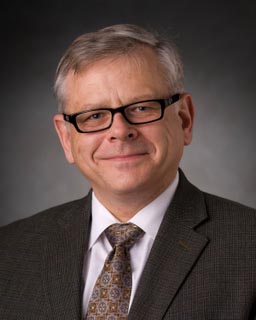Electrical engineer's research in remote sensing and space systems earns him distinguished honor
4/5/2015
UNIVERSITY PARK, Pa. — An atmospheric sprite lasts about one to 10 milliseconds. These optical phenomena that occur above thunderstorms are so quick that the naked eye generally only sees one for less than one hundredth of a second. While we’ve known about sprites for more than a century, it wasn’t until 1989 that the first sprite was photographed.
“It was totally serendipitous,” electrical engineering professor Victor Pasko said in an interview with Research Penn State. “It became a threshold for a new field of science.”
Pasko began studying this brief, luminous glow as a graduate student at Stanford University. Having studied space science as an undergraduate student, it made sense for him to accept an assistantship in space communications and radio science at Stanford, where he earned his Ph.D. in electrical engineering in 1996. After three years of postdoctoral research and one year as an engineering research associate there, he joined Penn State in 2000 as a member of the Communications and Space Sciences Laboratory.
Trying to understand the origins of the phenomena — how they are initiated and developed — has driven much of Pasko’s research. From using a low-light camera to capture a blue jet — also a high-altitude optical phenomenon that looks as its name implies — while conducting research in Puerto Rico to using high-speed videos and fluid models to discover that sprites form at plasma irregularities and may be useful in remote sensing of the lower ionosphere, Pasko has had a lot of success in his research-rich career.
“Dr. Pasko’s research has brought significant national and international visibility to our department, college and university,” said electrical engineering department head, Kultegin Aydin. “His contributions to scientific knowledge and engineering through research are exemplary and internationally acclaimed.”
Pasko’s success in atmospheric electrodynamics, atmospheric gravity waves, computational plasma physics and electromagnetics are lengthy and this year he is being honored with another accolade: The Penn State Engineering Alumni Society is recognizing him for his achievements by honoring him with the Outstanding Research Award. The award recognizes and rewards outstanding engineering researchers for accomplishments in advancing the frontiers of knowledge.
Additionally, Pasko has received the National Science Foundation’s Faculty Early Career Development Award, and the Editors’ Citations for Excellence in Refereeing for Geophysical Research Letters. He has published 112 articles in refereed journals, three book chapters and over 300 conference abstracts and proceeding papers. He is an associate editor of Radio Science and the Journal of Geophysical Research.




